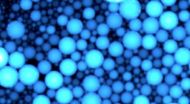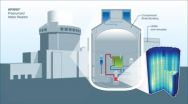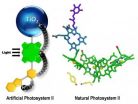(Press-News.org) WASHINGTON (Feb. 18, 2014) — While spirituality played a significant role in health care for centuries, technological advances in the 20th century overshadowed this more human side of medicine. Christina Puchalski, M.D.'94, RESD'97, founder and director of the George Washington University (GW) Institute for Spirituality and Health and professor of medicine at the GW School of Medicine and Health Sciences (SMHS), and co-authors published a commentary in Academic Medicine on the history of spirituality and health, the movement to reclaim medicine's spiritual roots, and the future of this field.
Spirituality, defined as a person's search for meaning, purpose, and connection, is now incorporated into the curricula of more than 75 percent of U.S. medical schools — curricula that was developed and implemented first at SMHS. In 2012, Oxford published the first textbook on spirituality and health. National and International organizations have recognized the role of spirituality in patient-centered care. This didn't happen without the tireless efforts of Puchalski, her colleagues at GW including Jim Blatt, M.D., director of the Clinical Learning and Simulation Skills Center and professor of medicine at SMHS, the support she received at GW, and grants from organizations such as the John Templeton Foundation.
"The integration of spirituality in to our medical culture is crucial for creating compassionate, patient-centered physicians," said Puchalski. "It changes our health system from merely emphasizing physical suffering. Rather, physicians are taught to respond to all patients' suffering with compassion, recognizing that health is more than the absence of disease. This is when healing, defined as patients' ability to find hope and meaning even in the midst of suffering, can occur."
The Academic Medicine paper includes:
- A report on the National Competencies in Spirituality and Health (NCSH), which was created at a consensus conference of faculty from seven medical schools and is being reported in the paper for the first time. The NCSH will organize efforts in this developing field within medical education and in national and international organizations.
Information on the GW Institute for Spirituality and Health-Templeton Reflection Rounds Initiative, a program supported by the John Templeton Foundation. The program provides clerkship students the opportunity to reflect on patient encounters and develop their own inner resources to address the suffering of others.
Commentary on the future direction of the field of spirituality and health.
"In the coming years, we hope the field of spirituality and health will have a more global reach, with a focus on interprofessional education," said Puchalski. "We also anticipate a full integration of spirituality and health education: From the first year of medical school, into residency, and continuing into professional development."
INFORMATION:
Additional authors on the paper include Blatt; Mikhail Kogan, M.D., medical director at the GW Center for Integrative Medicine; and Amy Butler, Ph.D., executive director for foundation relations at GW.
The Academic Medicine paper, titled "Spirituality and Health: The Development of a Field," is available at http://www.ncbi.nlm.nih.gov/pubmed/24280839.
Media: To schedule an interview with Dr. Puchalski, please contact Lisa Anderson at lisama2@gwu.edu or 202-994-3121.
About the GW Institute of Spirituality and Health:
The GW Institute of Spirituality and Health (GWish) was established in May 2001 as a leading organization on education and clinical issues related to spirituality and health. Under the direction of Founder and Director Christina M. Puchalski, M.D., professor of medicine at the GW School of Medicine and Health Sciences, GWish is changing the face of health care through innovative programs for physicians and other members of the multidisciplinary health care team, including clergy and chaplains. smhs.gwu.edu/gwish
About the GW School of Medicine and Health Sciences:
Founded in 1825, the GW School of Medicine and Health Sciences (SMHS) was the first medical school in the nation's capital and is the 11th oldest in the country. Working together in our nation's capital, with integrity and resolve, the GW SMHS is committed to improving the health and well-being of our local, national and global communities. smhs.gwu.edu
GW spirituality and health pioneer publishes paper on development of the field
2014-02-18
ELSE PRESS RELEASES FROM THIS DATE:
Neuropsychological assessment more efficient than MRI for tracking disease progression
2014-02-18
Amsterdam, NL, February 18, 2014 – Investigators at the University of Amsterdam, The Netherlands, have shown that progression of disease in memory clinic patients can be tracked efficiently with 45 minutes of neuropsychological testing. MRI measures of brain atrophy were shown to be less reliable to pick up changes in the same patients.
This finding has important implications for the design of clinical trials of new anti-Alzheimer drugs. If neuropsychological assessment is used as the outcome measure or "gold standard," fewer patients would be needed to conduct such ...
Artificial cells and salad dressing
2014-02-18
RIVERSIDE, Calif. (http://www.ucr.edu) — A University of California, Riverside assistant professor of engineering is among a group of researchers that have made important discoveries regarding the behavior of a synthetic molecular oscillator, which could serve as a timekeeping device to control artificial cells.
Elisa Franco, an assistant professor of mechanical engineering at UC Riverside's Bourns College of Engineering, and the other researchers developed methods to screen thousands of copies of this oscillator using small droplets. They found, surprisingly, that the ...
CASL, Westinghouse simulate neutron behavior in AP1000 reactor core
2014-02-18
OAK RIDGE, Tenn., Feb. 18, 2014 — Scientists and engineers developing more accurate approaches to analyzing nuclear power reactors have successfully tested a new suite of computer codes that closely model "neutronics" — the behavior of neutrons in a reactor core.
Technical staff at Westinghouse Electric Company, LLC, supported by the research team at the Consortium for Advanced Simulation of Light Water Reactors (CASL), used the Virtual Environment for Reactor Applications core simulator (VERA-CS) to analyze its AP1000 advanced pressurized water reactor (PWR). The testing ...
SDSC/UC San Diego researchers hone in on Alzheimer's disease
2014-02-18
Researchers studying peptides using the Gordon supercomputer at the San Diego Supercomputer Center (SDSC) at the University of California, San Diego (UCSD) have found new ways to elucidate the creation of the toxic oligomers associated with Alzheimer's disease.
Igor Tsigelny, a research scientist with SDSC, the UCSD Moores Cancer Center, and the Department of Neurosciences, focused on the small peptide called amyloid-beta, which pairs up with itself to form dimers and oligomers.
The scientists surveyed all the possible ways to look at the dynamics of conformational ...
Artificial leaf jumps developmental hurdle
2014-02-18
In a recent early online edition of Nature Chemistry, ASU scientists, along with colleagues at Argonne National Laboratory, have reported advances toward perfecting a functional artificial leaf.
Designing an artificial leaf that uses solar energy to convert water cheaply and efficiently into hydrogen and oxygen is one of the goals of BISfuel – the Energy Frontier Research Center, funded by the Department of Energy, in the Department of Chemistry and Biochemistry at Arizona State University.
Hydrogen is an important fuel in itself and serves as an indispensible ...
Wistar scientists develop gene test to accurately classify brain tumors
2014-02-18
cientists at The Wistar Institute have developed a mathematical method for classifying forms of glioblastoma, an aggressive and deadly type of brain cancer, through variations in the way these tumor cells "read" genes. Their system was capable of predicting the subclasses of glioblastoma tumors with 92 percent accuracy. With further testing, this system could enable physicians to accurately predict which forms of therapy would benefit their patients the most.
Their research was performed in collaboration with Donald M. O'Rourke, M.D., a neurosurgeon at the University ...
COXEN model picks the best drug for ovarian cancer
2014-02-18
There are three common drugs for advanced ovarian cancer: paclitaxel, cyclophosphamide, and topotecan. Like a shell game, if you pick the right drug a patient is likely to respond. And, unfortunately, picking the wrong drug can lead to treatment failure. As reported in this month's issue of the journal PLoS ONE, a University of Colorado Cancer Center and University of Virginia study used a sophisticated model of ovarian cancer genetics to match the right tumor with the right drug. Patients who were matched in this way lived an average 21 months longer than patients who ...
A battery small enough to be injected, energetic enough to track salmon
2014-02-18
RICHLAND, Wash. – Scientists have created a microbattery that packs twice the energy compared to current microbatteries used to monitor the movements of salmon through rivers in the Pacific Northwest and around the world.
The battery, a cylinder just slightly larger than a long grain of rice, is certainly not the world's smallest battery, as engineers have created batteries far tinier than the width of a human hair. But those smaller batteries don't hold enough energy to power acoustic fish tags. The new battery is small enough to be injected into an organism and holds ...
Controlling magnetism with an electric field
2014-02-18
Coral Gables, Fla. (Feb. 17, 2014) -- There is a big effort in industry to produce electrical devices with more and faster memory and logic. Magnetic memory elements, such as in a hard drive, and in the future in what is called MRAM (magnetic random access memory), use electrical currents to encode information. However, the heat which is generated is a significant problem, since it limits the density of devices and hence the performance of computer chips.
Scientists are now proposing a novel approach to achieve greater memory density while producing less heat: by using ...
University of Illinois study of 2011 flood will lead to better preparedness
2014-02-18
In May 2011, when the U.S. Army Corps of Engineers used explosives to breach a levee south of Cairo, Ill., diverting the rising waters of the Mississippi and Ohio rivers to prevent flooding in the town, about 130,000 acres of Missouri farmland were inundated. It was the largest flood of the lower Mississippi ever recorded, and researchers from the University of Illinois at Urbana-Champaign took advantage of this "once-in-a-scientific-lifetime" occurrence to study the damage, funded by a National Science Foundation Rapid Response Grant. Their results, published this week ...




